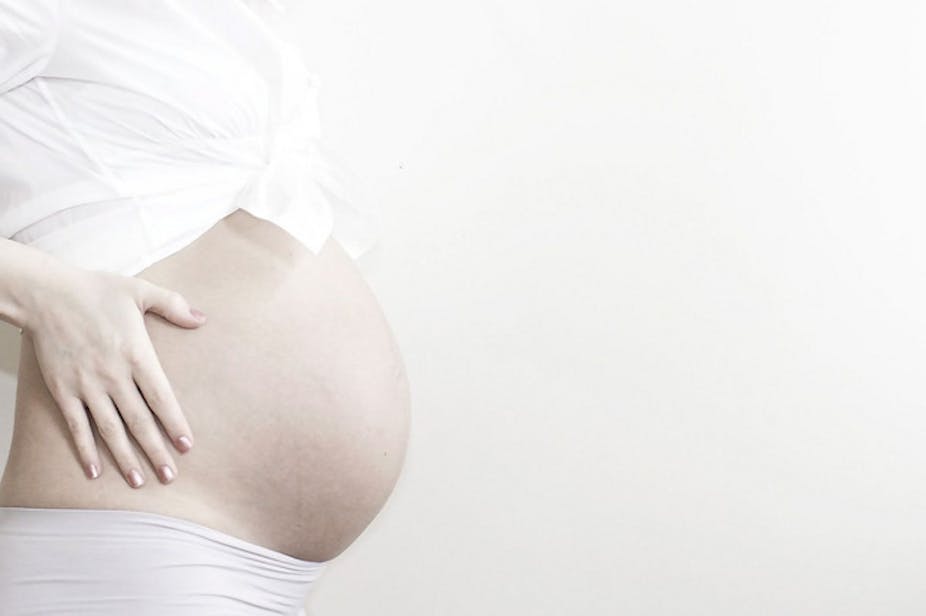“Women aren’t dolphins” is a phrase often bandied about by those who question why women want to immerse themselves in pools or warm baths during labour and birth. They forget that we’re not mountain goats or birds, but that doesn’t stop us from rock climbing or hang gliding.
As more scientific evidence emerges about the benefits of water immersion in labour and birth, hospitals and birth centres are increasingly adding large baths to their delivery rooms. The New South Wales department of health has even given a directive that “all maternity services offer access to water immersion in labour (target 100% by 2015)”, in an attempt to stem the rising caesarean section rate.
There are tales of generations of women in the South Pacific giving birth in shallow sea water, but long before this – and possibly throughout the history of humankind – water has been used for pain relief.
The modern use of water immersion for labour and birth began in 1970s Russia when Igor Tjarkovsky, a boat builder, began looking into the therapeutic effects of water. He later installed a glass tank in his home for women to use during childbirth.
Michel Odent, the French obstetrician, went on to popularise water immersion in the 1970s and 80s in Europe, after installing a plastic paddling pool in a French hospital and finding it reduced women’s need for painkillers. His first water birth occurred by accident and Odent soon realised the potential benefits of leaving women in the water for the birth.
Water births moved from fad to mainstream maternity care in 1993, with the publication of the United Kingdom’s Changing Childbirth report, which recommended pool facilities be an option available to women in all UK maternity units.

The benefits of using water in labour are mainly attributed to buoyancy, hydrostatic pressure and the effect of warmth. Women can move more easily than on land, enabling them to change position with ease. Movement and relaxation help facilitate positive neuro-hormonal interactions that alleviate pain naturally.
There is some evidence that water immersion may be associated with improved blood flow in the uterus, lower blood pressure, less painful contractions, shorter labours and fewer interventions. There are also psychological benefits, with women feeling more in control and that they have their own space, with the bath forming a natural barrier between her and the health providers.
A common concern with water birth is that the baby could try to breathe underwater and drown. But healthy babies have what’s called a diving reflex (or bradycardic response), which causes the infant to hold his breath when under water. The reflex is stimulated via the the infant’s facial skin receptors, which detect the water and inhibits breathing.
There are also concerns about increased tearing of the perineum (the tissue between the vagina and anus) due to the lack of control of the baby’s advancing head. But randomised trials to date, and more importantly a systematic review of these trials, has not shown this to be the case.
Last month I published a study in the Journal of Midwifery examining the outcomes of 6,144 Australian women who had normal vaginal births in a birth centre over a 12 year period. I compared outcomes for the mother and baby when women gave birth in water, with those who gave birth in six other birth positions on land: kneeling or all fours, squatting, side lying, semi seated, using a birth stool and standing.

Compared with water birth, the women who gave birth on a birth stool had nearly one-and-a- half times higher rate of major perineal trauma and more than twice the rate of haemorrhage after delivery.
There was no difference in major perineal trauma and haemorrhage after delivery between women who gave birth in water and those who opted for a semi-seated position, the most common birth position in Australia.
Compared with water birth however, babies born in a semi-seated position had a four-and-a-half times higher incidence of five-minute APGAR scores less than seven. APGAR scores rate the newborn’s breathing effort, heart rate, muscle tone, reflexes and skin colour. A score of less than seven at five minutes following the birth indicates medical intervention was needed to resuscitate the baby.
We controlled for as many variables as we could, including whether it was a first or subsequent birth, a long period of pushing, a big baby, or a midwife or obstetrician undertaking the delivery. All these women had normal vaginal births so surgical birth was not a variable.
So the idea that babies are more likely to drown if born in water, or that rates of tearing and injury are worse, doesn’t hold up.
While women may not be dolphins, they are drawn to water during labour and birth, with little evidence of harm and some evidence of benefit. And once experienced, women usually make the same choice for a subsequent birth and report many benefits to this style of birth.

